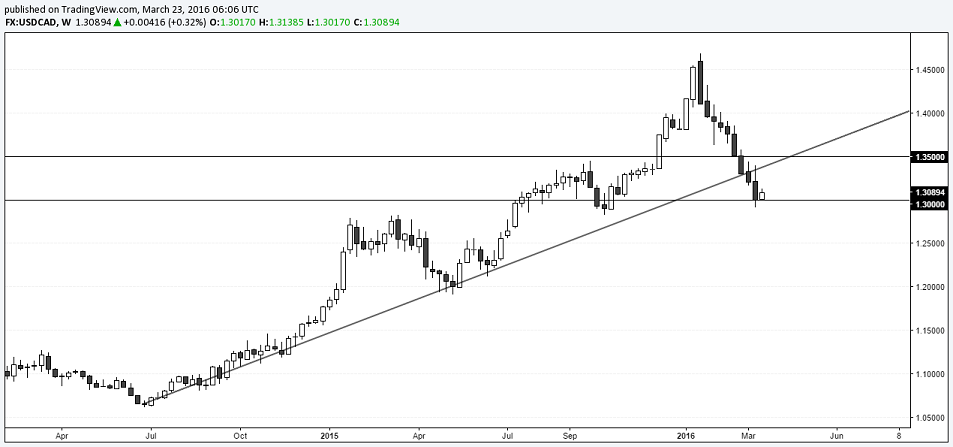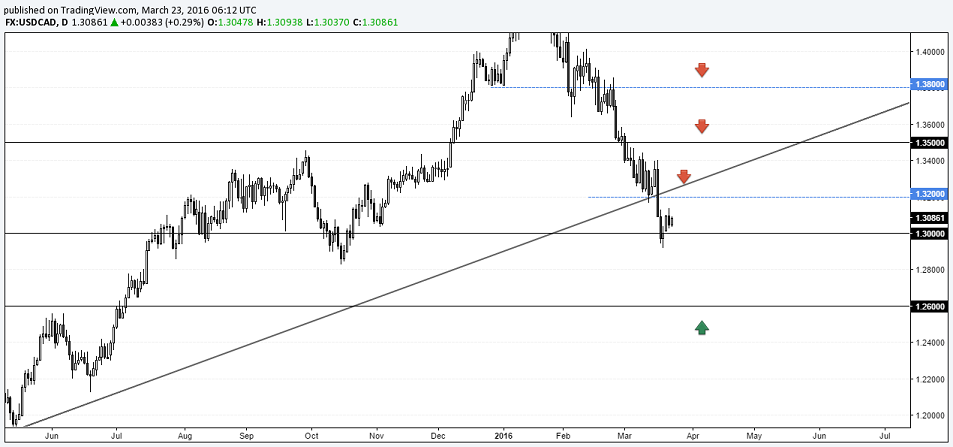Breaking with tradition, in an era where most governments in the G7 economy have unleashed austerity measures, cutting back on spending while stretching the Central Banks to revive growth, the Canadian government unveiled a fiscal stimulus package, worth 47 billion Canadian dollars over a five year period. It does however come at the cost of running up the deficit three times more than what as promised in the elections.
The fiscal spending package focuses on infrastructure projects including public transport and tax reliefs. The government hopes that the current measures would boost Canadian GDP by 0.50% in 2016 and by 1.0% in 2017 to revive the economic growth in the country which has been hit by the sharp declines in Oil prices.
Unveiling the budget, Canada's finance minister Bill Morneau said that the government as investing in its people and the economy to prepare for a brighter future. Sounding positive, the finance minister said that if growth estimates were met, the country would be able to balance its budget within five years.
The fiscal spending package from the government will ease pressure off the Bank of Canada which left interest rates unchanged at 0.50% at its last meeting in March. However, skeptics argue that much more needs to be done with some bearish calls speculating another 25bps rate cut from the BoC by the end of the first half of 2016. The government sounded optimistic on Oil prices noting that it expects Oil to stabilize around $40 in 2016 and around $52 by 2017.
While USDCAD did not react much to the financial budget release, the Canadian dollar remains the second best performing currency this year. USDCAD has been in a steady downtrend since early January this year after prices briefly traded near 1.46. USDCAD is now down for the ninth consecutive week, trading at 1.3089, with over 10% gains against the US Dollar.
On the technical chart, USDCAD has broken the long term trend line which has held as support in the past. The break of this trend line is likely to see USDCAD post further declines in the long term. Price action has currently found support off the 1.30 psychological level while to the upside 1.35 comes in as the key resistance level. If the bearish trend is to show signs of moderation, USDCAD could move into a range within these levels. Below 1.30, 1.25 and 1.20 come in as the next levels of support.
On the daily chart, pullbacks are likely to stall near 1.32 handle but as long as prices do not close above this level on a daily basis to establish support, the bias remains to the downside. Above 1.32, resistance at 1.35 will be critical to the bias as a break above 1.35 could see USDCAD recover from the declines to test the previously broken support at 1.38, which incidentally marks the 50% Fib level off the highs at 1.4689 on January 20th, 2016 and the lows of 1.3017 on March 21st.
In terms of the fundamentals, the US Dollar is likely to continue its easing bias as the Fed held rates steady and signaled a period of pause. The market expectations are for the next rate hike to come in at the June FOMC meeting with another 25bps rate hike, but this is likely to be influenced by how the US and the global economic data evolves. For the moment, USDCAD is likely to continue its declines after prices posted a steady and a strong bullish rally over the past several years.
AllFXBrokers does not bear any responsibility for losses incurred from depositing with brokers we list or advertise. If in doubt please seek independent investment advice.
Recommended Content
Editors’ Picks
EUR/USD edges lower toward 1.0700 post-US PCE

EUR/USD stays under modest bearish pressure but manages to hold above 1.0700 in the American session on Friday. The US Dollar (USD) gathers strength against its rivals after the stronger-than-forecast PCE inflation data, not allowing the pair to gain traction.
GBP/USD retreats to 1.2500 on renewed USD strength

GBP/USD lost its traction and turned negative on the day near 1.2500. Following the stronger-than-expected PCE inflation readings from the US, the USD stays resilient and makes it difficult for the pair to gather recovery momentum.
Gold struggles to hold above $2,350 following US inflation

Gold turned south and declined toward $2,340, erasing a large portion of its daily gains, as the USD benefited from PCE inflation data. The benchmark 10-year US yield, however, stays in negative territory and helps XAU/USD limit its losses.
Bitcoin Weekly Forecast: BTC’s next breakout could propel it to $80,000 Premium

Bitcoin’s recent price consolidation could be nearing its end as technical indicators and on-chain metrics suggest a potential upward breakout. However, this move would not be straightforward and could punish impatient investors.
Week ahead – Hawkish risk as Fed and NFP on tap, Eurozone data eyed too

Fed meets on Wednesday as US inflation stays elevated. Will Friday’s jobs report bring relief or more angst for the markets? Eurozone flash GDP and CPI numbers in focus for the Euro.

